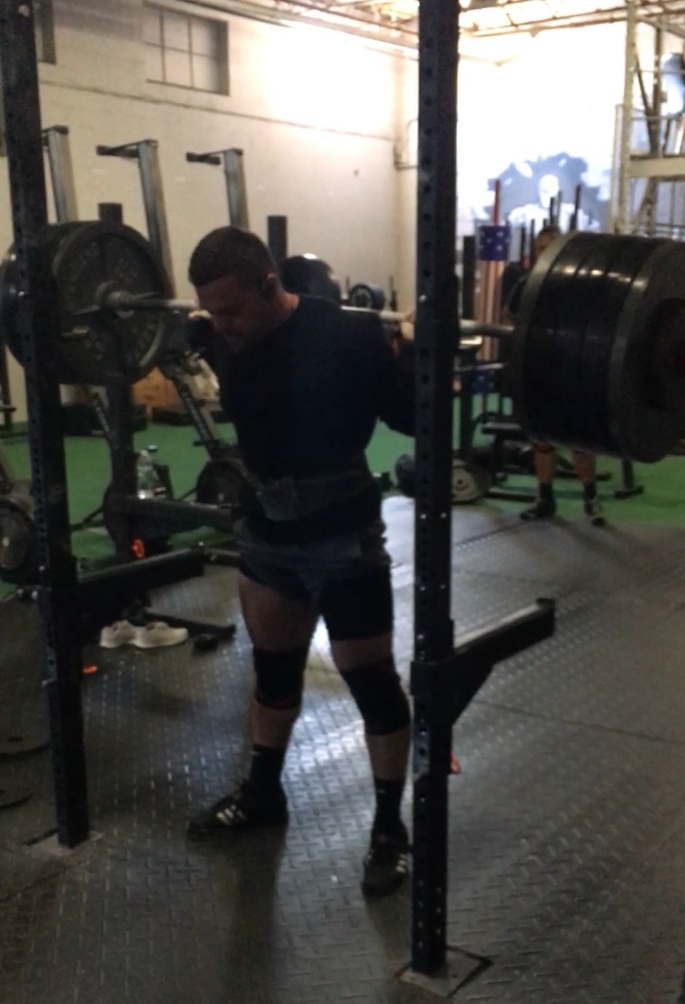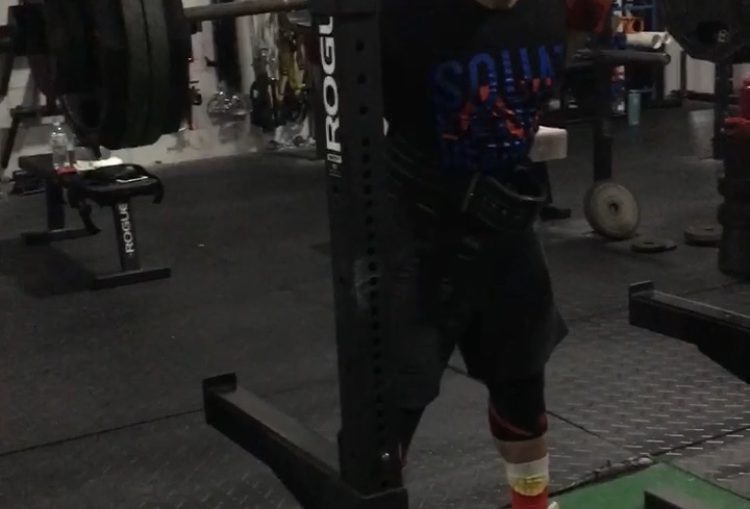Written by: Kevin Cann
My Instagram feed is constantly filled with lifters hitting personal records (PR). Most of these PRs that I see are actually hit in the gym. Now, the goal of powerlifting as a sport is to be hitting your best lifts at the most important competitions of the year.
If you are not hitting your best lifts on the platform at the most important competitions, then something is going wrong with your training. With that said, should you be hitting PRs in training? This seems to be a topic of discussion amongst many coaches on the internet.
I am going to start things off by saying that you absolutely do not need to be hitting PRs in training to see if a training block is going well. In fact, in the 2 plus years that I have been working with Boris Sheiko I have never hit a PR on a lift that was not during a planned test.
During this time, I have put 250lbs on my total. My program very rarely even hits 90% of 1RM. I may hit 90% on bench and deadlift with the use of boards and blocks, but very rarely will I take that weight on the squat. Maybe 1-2 times leading up to a test. The chance to hit a PR is not even an option in my program.
The majority of my lifters have similar programs to myself. However, I do differ from Sheiko in one important aspect and that is with the attempts of heavy singles. My lifters take more heavy singles than I do. I have found this to work better with my lifters than not doing them.
These heavy singles are usually programmed between 87.5% and 92.5% of 1RM for anywhere between 1 and 3 sets. When programming these singles in I make sure that the overall stress of the program remains the same and that the average intensity still falls between the guidelines I outline in my training manual which can be found here.
Many will argue that lifting at or above 90% is dangerous and unnecessary. I agree with the second part, but not so much with the first. What makes 90% more dangerous than the 2nd or 3rd rep at 85%? Nothing. I would even argue that 90% is “safer” in this scenario. The 2nd or 3rd rep at 85% is more difficult than a single at 90% so it is not necessary to touch weights that heavy.
However, I think many lifters become psychologically worked up over the heavier weights. I have seen this time and again with my lifters. However, the more they touch the heavier weights the less worked up they get and the more confidence they have. Come meet time they have taken their opener and little heavier multiple times in training and they know that they can hit it under any circumstances.

It also prepares the lifter to handle those heavier weights. There is nothing more specific to powerlifting than taking heavy singles with weights that you will use in competition. Feeling the weight on your back, the actual coordination of the movement under those loads, rate coding and other neurological factors as well get trained as specific as possible. This gives me a lot of feedback of the lifter’s capabilities as well to pick openers and other attempts.
This deviation to my programs for my lifters, from my own, came from some observations of other lifters Sheiko has coached. In Russia they compete 4 to 6 times per year. I am competing on average 2 times per year.
If we look at a lifter competing 4 times per year they will squat 90% 1 to 2 times for 2 to 3 singles leading up to a test where they will hit roughly 4 repetitions at 90% and higher. The lifter will then hit 3 repetitions of the squat at the competition at or above 90%. Total Reps at 90% or more for this lifter is 12. This will be repeated at least 3 times throughout the year. That is 36 repetitions at or above 90% of 1RM for a lifter competing 4 times. Even more if they compete 6 times.
I tend to only hit 90% or above on half as many attempts in a calendar year due to my availability to compete. This is a MAJOR difference for my athletes as well. Due to this difference I try to give them around 36 or more singles at 90% or above in a calendar year for progression.

During these times where my lifters are attempting heavier singles, we sometimes hit PRs. I know many coaches will say “Don’t hit PRs in the gym save them for the platform.” My question to them is why? Because it is more tiring or risky?
When we hit these PRs I am looking for a heavy single, without a sticking point, and some left in the tank. This allows the lifter to recover, train a stable movement pattern as I have discussed in previous articles, and builds confidence for them moving forward. It also puts us in line with the Russian lifters that compete 4 to 6 times per year under a similar program/system when it comes to heavy singles.
If the PR is there in training there is nothing wrong with taking it as long as it fits the guidelines in which I mentioned. No need to be grinding out singles and getting nosebleeds in training. I look for the absence of sticking points. If the squat is still smooth and you know the PR is there with the same technique it can be a great confidence booster moving forward. This includes on the platform.
Enough lighter/recovery days need to be planned throughout the lifter’s block to ensure that they are not getting too beat up is important. Like I said, the average intensities need to adhere to the guidelines in the Precision Powerlifting Systems Training Manual.

